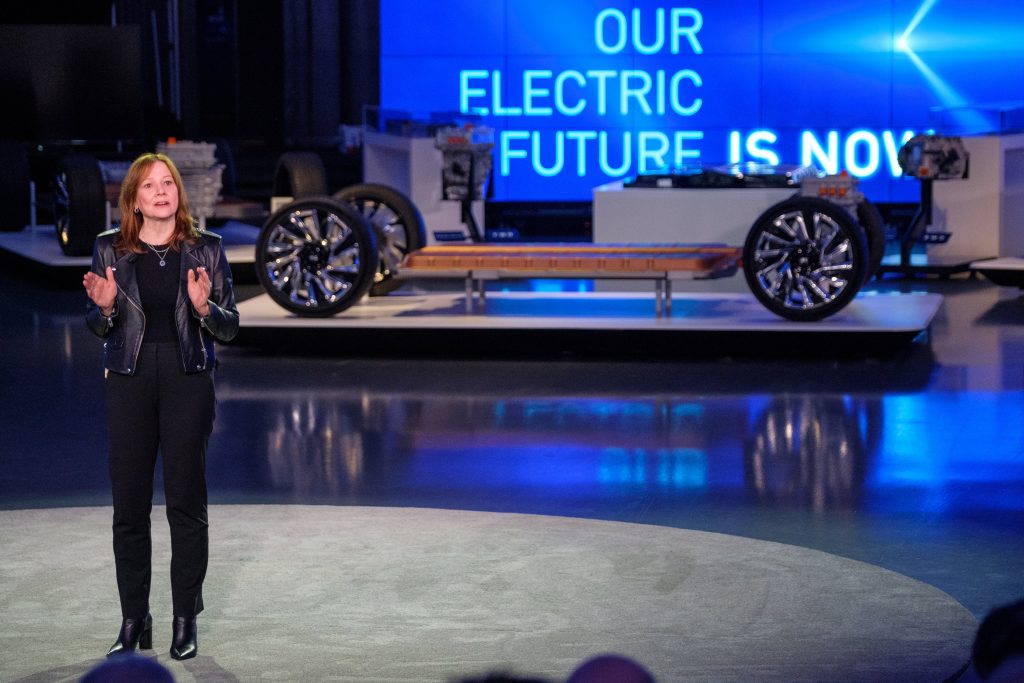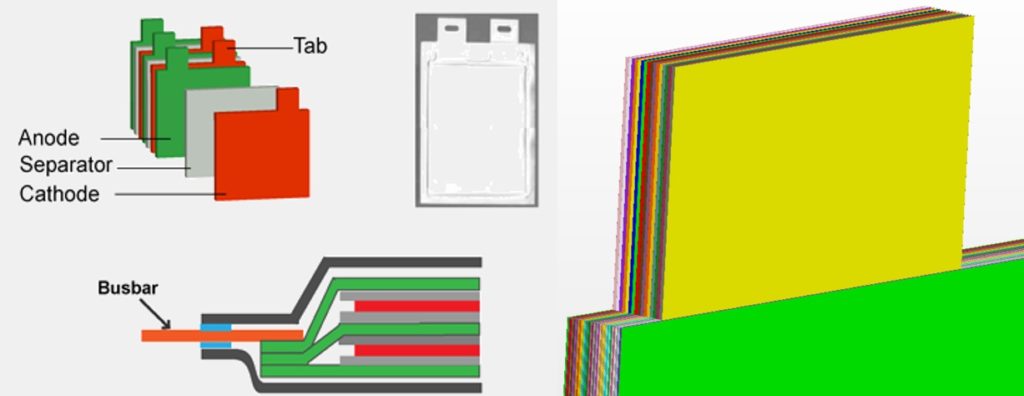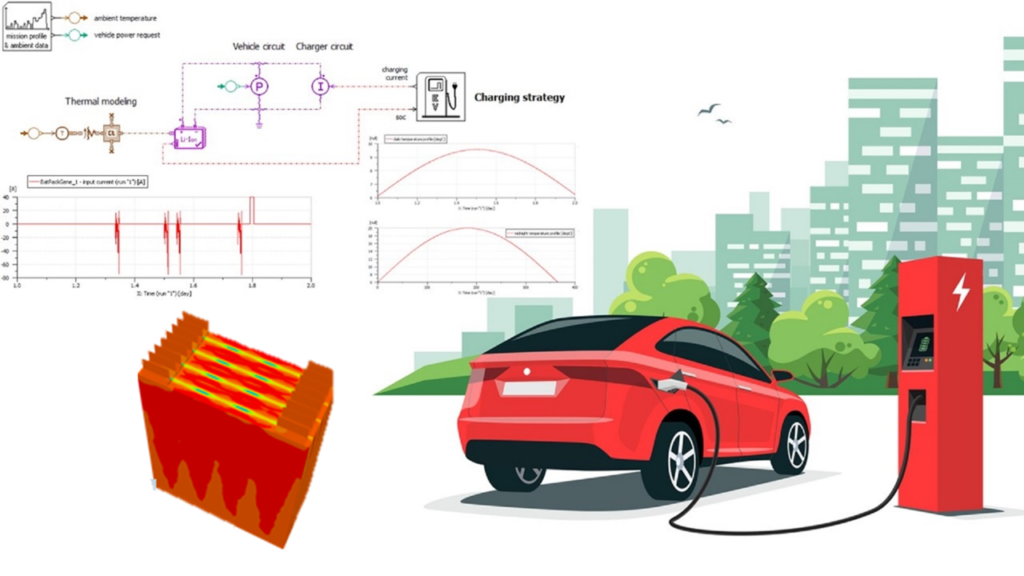The E-race: experienced runners do not hurry and visualize the finish line

2019 was a prominent year for electric vehicles. The leading OEMs are now engaged in the E-race and customers are ready to adopt what is no longer a trend but a viable option for their daily commutes. The question of performance, maintenance costs and range of electric vehicles (EVs) is becoming a thing of the past for customers who are now back on selecting a brand that fits their values, tastes and wallet, watching “Top 30 EVs” YouTube videos.

One of the most foremost announcements of the last few weeks, was GM’s communication around their new improved battery pack called Ultium. Described as a flexible and multifaceted platform, the Ultium pack has been developed to underpin all future GM’s electric vehicle architectures.
But what intrigues me is GM’s choice to invest in large-format, pouch-style cells, enabling them to stack cells vertically and horizontally. Such a choice done early in the definition of what will be the strategy of GM for the next decades has certainly been preceded by a smart combination of virtual investigation and a minimum of battery pack prototypes.
The second move that differentiates the Ultium battery pack from most EV batteries in production today is the addition of aluminum within the well know NCM (nickel, cobalt, magnesium) chemistry mix, reducing the cobalt content by 70%. A great move towards a safer production, for both cobalt miners and the environment.
To the right manufacturer the right tools
When an outsider like Tesla tumbles into your industry and starts the E-race at a high pace, one possible effect is for you to panic or yet to go blind and stick to your plan. Experienced runners take their time, visualize the finish line and smoothly deploy a counter-attack. General Motors is one example.
Of course, even if they took some time before moving any pawns, GM engineers and their partner LG Chem did not build and test all possible combinations for such chemistry mix and cell geometrical design. I can assure you they deployed a simulation-based approach to virtually assess cell performance. Which means they required a virtual platform proposing at least the following features:
- Availability of both cylindrical and pouch cell models for an initial design investigation
- Possibility to perform sensitivity analysis on cell chemistry
- Possibility to virtually stack the cells and model the battery pack integrated within the vehicle
- Connectivity between these modeling levels, easy or semi-automated model exchange
Electro-chemical simulation in a cell-manufacturer oriented interface
Having access to software capable of cell performance simulation with the detailed geometrical specification of the cell is indeed a key to understanding the impact of your design choices. Will I run after a commonly used cylindrical cell, already available on the market, and optimize its design to fit my requirements? Or will I work with a partner to develop a pouch cell with new chemistry? Using a physical simulation approach leads to an improved consideration of your design decisions and their impact on your system performances.
At this level of detail, you can virtually select individual cell part geometry, like electrodes, tabs, current collectors’ designs, etc. Each part should be more precisely defined with characteristics. As an example, you will analyze which material and which thickness is the most promising for the current collectors and the list goes on to fully build the cell.
From the point of view of a simulation engineer, the expectation is to work on realistic models embedded in a cell manufacturer-oriented interface. But also, on the openness of the tool to import test data and to efficiently calibrate an Empirical Circuit Model (ECM); or yet the model export capability of the software to flow and thermal simulation tools in order to support battery pack design and its integration within the vehicle.

I invite you to (re)-watch how Saft company designs graphite-silicon anode cell which gives an understanding about what might have been the workflow used by LG Chem to confirm their strategy to implement Aluminum within an NCM mix; or yet how Battery Design company efficiently calibrate ECMs using Simcenter Battery Design Studio.
The Digital Twin deployed from the start to the end of the E-race
Back to GM’s Ultium battery pack. This modular architecture will be capable of 19 different battery and drive unit configurations; 400 and 800-volt packs with storage ranging from 50 to 200kWh, and front, rear, all-wheel-drive transmission.
Same acceleration towards electrification as the Volkswagen group, which plans to reach a total of 15 electric vehicles as part of its I.D. fleet, vehicles which capacities will go from the I.D. Crozz (83kWh pack) to the I.D. Buzz Cargo (47kWh) or yet the I.D. Buggy (62kWh).
I can assure you that these two stakeholders did deploy a simulation-based approach to pre-size, define the layout, and validate the control strategy of these battery pack configurations and their thermal management system. The main objective for them has been to reduce the number of physical prototypes and to frontload possible integration challenges. Neither General Motors nor Volkswagen can afford 100 iterations on 19 configurations using physical testing, in terms of cost, capabilities and time.
This is the reason why a system simulation approach for system requirement definition, component pre-sizing, and integrated system performance validation, combined with a multi-physics simulation, including flow & thermal aspects for a detailed analysis of the battery pack performance is paramount.

From the point of view of a simulation engineer working on the battery pack, expectations are slightly different. At each stage of the development cycle, the objective is to have access to multi-physics models (electric, thermal, fluid, mechanical) embedded in a domain-oriented interface. Some examples:
- I am responsible for sizing 19 Ultium battery packs and defining cooling requirements for each one: I need fast system simulation to analyze vehicle energy distribution like Simcenter Amesim
- I am responsible for guaranteeing a maximum temperature for each cell included in my liquid-cooled pack: I need refined Computational Fluid Dynamics (CFD) simulation coupled with thermal simulation available within Simcenter STAR-CCM+
- I am a control engineer responsible for developing Hardware in the Loop (HiL) platform for control validation: I need a seamless model reduction workflow, or Neural Network technology to embed these models on my real-time machine.
Note: to go deeper into the control virtual test bench topic, I invite you to read the following Everlasting project report which stands for “Electric Vehicle Enhanced Range, Lifetime And Safety Through INGenious battery management”.
This is what makes the Siemens Simcenter portfolio relevant for any stakeholders engaged in the electrification race. A portfolio of simulation software and test solutions structured like its customers, including inter-connected domain-oriented software as Simcenter STAR-CCM+ and solution-oriented software as Simcenter Battery Design Studio.
Or again on another example covering the electric traction motor component: Simcenter SPEED and Simcenter Motorsolve for electric machine design, strongly coupled with Simcenter STAR-CCM+ and Simcenter MAGNET respectively dedicated to electromagnetics domain-oriented simulation.
It is finally worth mentioning that seamless connectivity to a Design Space Exploration tool like HEEDS, for example, will not only increase engineer efficiency to find an optimized configuration but also bring innovative designs, faster to the market.
“No time for a coffee, let’s charge the car and hit the road.”
What about the predicted charging performance of the Ultium battery pack? From the different articles published, GM’s new EV architecture enables Level 2 and DC fast charging, with up to 100miles of range available in the first 10min. This charging performance matches with Tesla V3 supercharger with an average of 620 miles per hour.
When you charge a battery pack at this high rate, you can expect the electrochemistry reaction to deliver heat, which needs to be rejected to guarantee cell safety and lifetime. We don’t know yet which strategy will be used by GM but Tesla did develop a smart thermal management system with several fluid loops including the Air Conditioning system. Even heat pump technology is now being used on some of the new configurations such as the Jaguar I-PACE.

Can a simulation approach help with selecting the technology to manage the thermal behavior of your battery during such a fast charging scenario? Can the cell geometry be optimized to support the high electro-thermal transient excitation? From the above, you should already have the answer.
And if you want to improve battery fast charging experience thanks to a simulation approach keeping an eye on battery aging, register to the upcoming webinar and join us on April 22nd!
Cheers.


